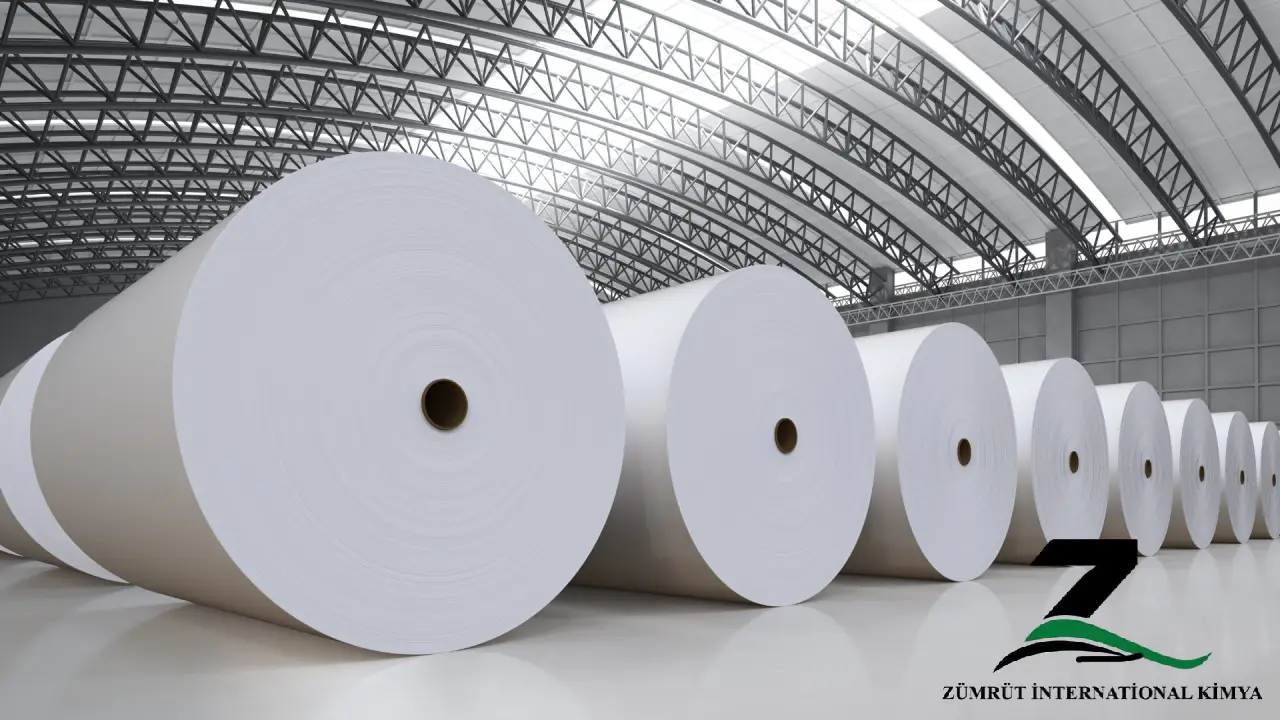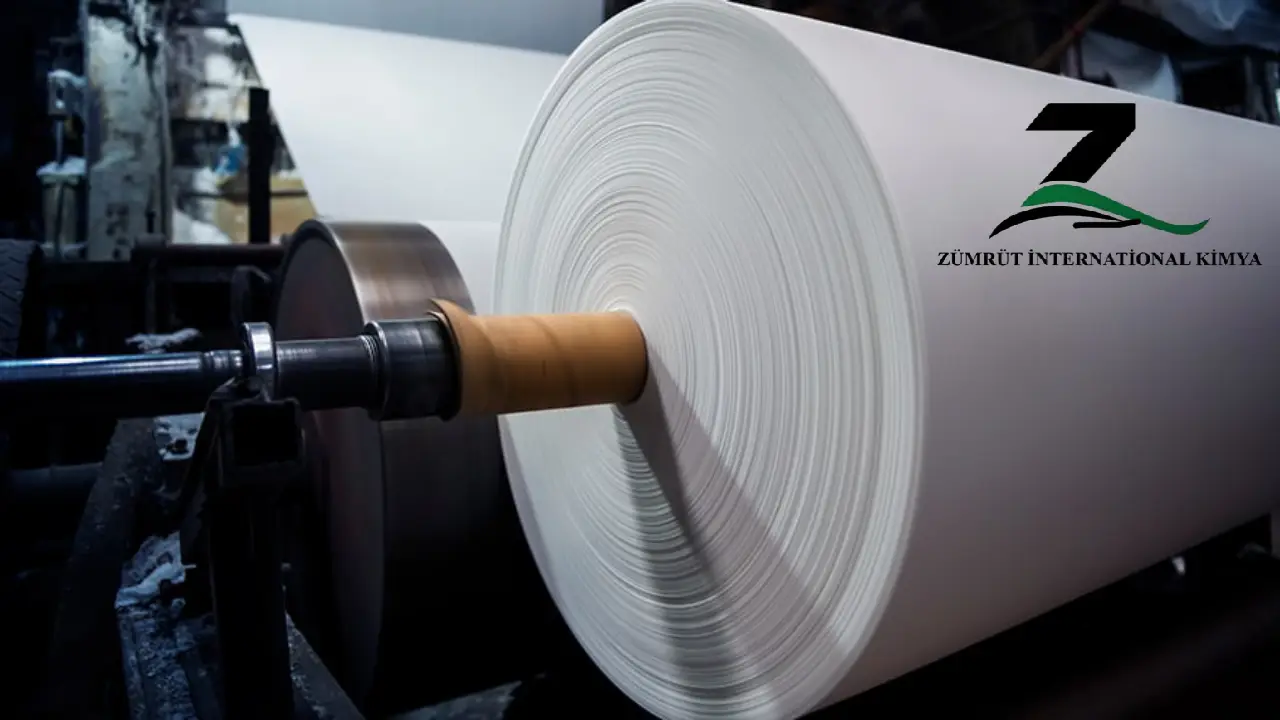
- What is Soda Ash
- Role of Soda Ash in the Paper Industry
- Benefits of Using Soda Ash in Paper Production
- The Essential Role of Soda Ash for Paper Industry
- Introduction to Soda Ash in Paper Manufacturing
- The Role of Soda Ash in Paper Production Processes
- Safety and Environmental Considerations of Using Soda Ash in Paper Mills
- Environmental Impact and Sustainability
What is Soda Ash
Soda ash, also known as sodium carbonate (Na₂CO₃), is a white, water-soluble powder commonly used in various industries, including the paper and pulp sector. It plays a crucial role in multiple stages of paper production.
Role of Soda Ash in the Paper Industry
- pH Control:
Soda ash is used to regulate the alkalinity of the pulp, ensuring optimal conditions for fiber processing and enhancing paper quality. - Pulping Process:
It aids in breaking down lignin, facilitating the separation of cellulose fibers and improving the efficiency of pulping. - Bleaching Agent:
Soda ash helps in removing impurities and enhancing the whiteness of paper by assisting in the bleaching process. - Sizing and Coating:
Used in paper sizing to improve water resistance and surface smoothness for better printability. - Water Softening:
It helps in treating hard water used during paper production by removing calcium and magnesium ions, preventing scale formation. - Effluent Treatment:
Soda ash is applied in wastewater treatment to neutralize acidic effluents before discharge.
Benefits of Using Soda Ash in Paper Production
- Improves paper brightness and strength.
- Enhances ink absorption and print quality.
- Reduces production costs by optimizing chemical consumption.
- Eco-friendly solution compared to some alternatives.
- Maintains equipment longevity by preventing scale build-up.
Grades of Soda Ash for Paper Industry
- Light Soda Ash:
Used for water treatment and pH control. - Dense Soda Ash:
Preferred for sizing and coating due to its higher purity and lower dusting properties.
The Essential Role of Soda Ash for Paper Industry
Soda ash for paper industry not only signifies a chemical addition but embodies innovation within paper production processes. This section delves into the innovative applications of soda ash, highlighting its role in enhancing the environmental sustainability of paper production, from waste water treatment to energy-efficient manufacturing practices. Through examining the integration of soda ash in modern paper mills, we illuminate the pathways towards more sustainable, efficient, and high-quality paper production, illustrating the material’s critical role in shaping the future of the industry.

Introduction to Soda Ash in Paper Manufacturing
Soda ash, scientifically known as sodium carbonate (Na2CO3), plays a crucial role in the paper manufacturing industry. It’s a key ingredient that influences both the process and the final product quality. Understanding its function, benefits, and the intricacies of its use in paper manufacturing is essential for industry professionals and enthusiasts alike.
The Role of Soda Ash in Paper Production
In the realm of paper production, soda ash serves several vital functions. Primarily, it is used to adjust pH levels during the cooking process of wood chips. The alkaline nature of soda ash ensures an optimal environment for the breakdown of lignin, the organic polymer that binds cellulose fibers together in wood. By facilitating the removal of lignin, soda ash aids in the production of purer, stronger paper.
Soda Ash and Paper Quality
The quality of paper is significantly enhanced by the use of soda ash. It contributes to improved brightness and whiteness, factors that are critical in the production of high-grade paper. Additionally, soda ash helps in achieving a smoother surface texture, essential for printing and writing purposes.
Economic and Environmental Aspects
From an economic standpoint, soda ash is a cost-effective solution in paper production. It reduces the need for more expensive chemicals and minimizes waste production. Environmentally, the use of soda ash in paper manufacturing aligns with sustainable practices. It is a non-toxic, environmentally friendly chemical that minimizes harmful emissions during the paper production process.
Soda Ash Varieties and Their Applications
There are two primary forms of soda ash used in the industry: light and dense. Light soda ash is preferred for its lower density and excellent dissolving properties, making it ideal for certain stages of paper production. Dense soda ash, with its higher particle size, is suited for processes that require slower dissolution rates.
Innovation and Future Trends
The paper industry continually evolves, and so does the role of soda ash. Innovations in processing techniques and the development of more efficient, environmentally friendly forms of soda ash are on the horizon. These advancements promise to enhance the quality and sustainability of paper production even further.
In conclusion, soda ash is not just a chemical additive; it’s a pivotal component in the paper manufacturing industry. Its multifaceted role in improving paper quality, environmental sustainability, and cost-effectiveness underscores its indispensable status in the industry. As we move forward, the continued evolution and innovation in the use of soda ash will undoubtedly play a key role in shaping the future of paper manufacturing.
The Role of Soda Ash in Paper Production Processes
Soda ash, or sodium carbonate, is a fundamental ingredient in the paper production process, acting as a versatile agent that significantly impacts various stages of paper manufacturing. Its application ranges from the initial chemical pulping to the final adjustments of paper properties, making it indispensable for ensuring both the efficiency of the process and the quality of the end product.
Chemical Pulping and pH Control
One of the primary functions of soda ash in paper production is in the chemical pulping process. It is used to maintain an alkaline environment necessary for the effective breaking down of lignin, a complex organic polymer that binds cellulose fibers in wood. By facilitating the separation of lignin from cellulose fibers, soda ash enables the production of a stronger and purer paper pulp. The controlled pH environment also prevents the degradation of cellulose, ensuring the structural integrity and durability of the final paper product.
Improvement of Paper Properties
Soda ash plays a critical role in enhancing various properties of paper. It contributes to increased paper brightness and whiteness, crucial for high-quality printing and writing papers. Additionally, soda ash is involved in the process of sizing, where it helps in adjusting the paper’s ink absorption properties, ensuring that ink does not spread and that print quality is sharp and clear.
Environmental and Cost Benefits
The use of soda ash in paper production is also beneficial from an environmental and economic perspective. It is a more eco-friendly alternative to other chemicals that may be used for similar purposes, as it is less toxic and contributes to less environmental pollution. Economically, soda ash is cost-effective, reducing the overall expenses associated with the chemical treatment of pulp and the production process. Its efficiency in lignin removal and paper property enhancement means lower costs for additional processing and additives.
Waste Water Treatment
In the paper industry, managing waste water efficiently is crucial for both environmental sustainability and compliance with regulations. Soda ash is used in the treatment of waste water generated during paper production. It adjusts the pH of waste water, facilitating the removal of impurities and ensuring that the water can be safely discharged or reused in the process. This not only helps in reducing the environmental impact of paper production but also in conserving water resources.
Adapting to New Technologies
As the paper industry evolves, so does the application of soda ash. Innovations in paper production processes continually seek to optimize the use of chemicals like soda ash to improve efficiency, reduce environmental impact, and enhance the quality of paper. Research into alternative sources of soda ash, such as trona, a naturally occurring mineral, and advancements in recycling and recovery processes, are examples of how the industry is adapting to sustainability goals and technological advancements.
In summary, the role of soda ash in paper production processes is multifaceted and indispensable. It not only aids in the crucial stages of chemical pulping and property enhancement but also contributes significantly to the environmental and economic aspects of paper manufacturing. As the industry continues to innovate and evolve, the use of soda ash is likely to remain a key factor in the sustainable and efficient production of paper.
Safety and Environmental Considerations of Using Soda Ash in Paper Mills
Incorporating soda ash (sodium carbonate) into paper manufacturing processes not only enhances the quality of paper but also necessitates a thorough understanding and adherence to safety and environmental protocols. This guide highlights the critical safety and environmental considerations associated with the use of soda ash in paper mills, aiming to ensure a balance between operational efficiency and sustainable practices.
Safety Measures for Handling Soda Ash
- Personal Protective Equipment (PPE): Workers handling soda ash should wear appropriate PPE, including gloves, eye protection, and dust masks or respirators. This is crucial to prevent skin and eye irritation that can result from direct contact with soda ash powder or solutions.
- Ventilation Systems: Adequate ventilation in areas where soda ash is stored and used helps to reduce the risk of inhalation of dust particles. Installing dust extraction and air purification systems minimizes the airborne concentration of soda ash, ensuring a safer working environment.
- Spill Management: Establishing protocols for managing spills of soda ash is essential. Spills should be cleaned up promptly to prevent slipping hazards and to minimize dust dispersal into the environment. Wet cleaning methods are preferred to reduce dust generation.
Environmental Impact and Management
- Waste Water Treatment: Soda ash use in paper mills contributes to the alkalinity of waste water. It’s essential to carefully manage pH levels in effluent streams to comply with environmental regulations. Treatment processes should be designed to neutralize effluent before discharge, ensuring it does not harm aquatic ecosystems.
- Air Emissions: Though soda ash itself does not directly contribute to toxic air emissions, the process of its production and the potential release of particulate matter during handling in paper mills can impact air quality. Implementing dust control measures and ensuring proper storage and handling procedures can mitigate these effects.
- Resource Efficiency: Optimizing the use of soda ash in paper manufacturing processes not only improves production efficiency but also reduces the environmental footprint. This includes recalibrating dosages to minimize excess use and exploring recycling opportunities for recovered soda ash from process waste streams.
Environmental Impact and Sustainability
With the increasing pressure on the paper industry to be sustainable, soda ash is seen as a more environmentally friendly choice compared to harsh chemicals. Its carbon footprint is much smaller, and it sends lesser numbers of harmful pollutants into the atmosphere, making it more palatable for mills trying to reduce the seriousness of their ecological footprint. Further, the utilization of soda ash in wastewater treatment can ensure compliance with stringent environmental legislation by paper mills.


